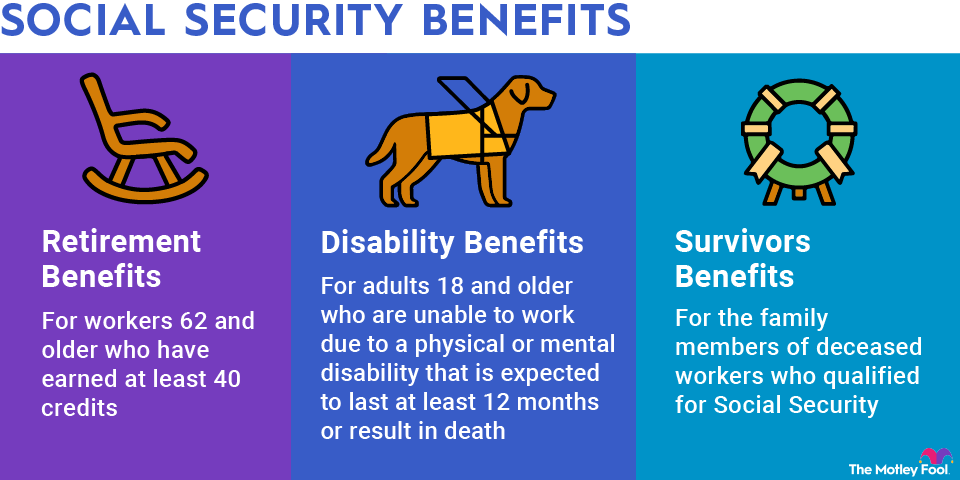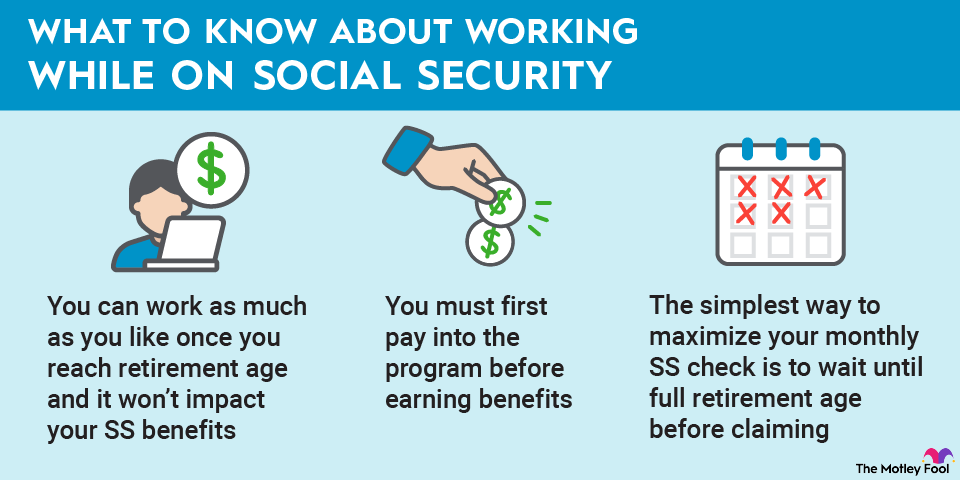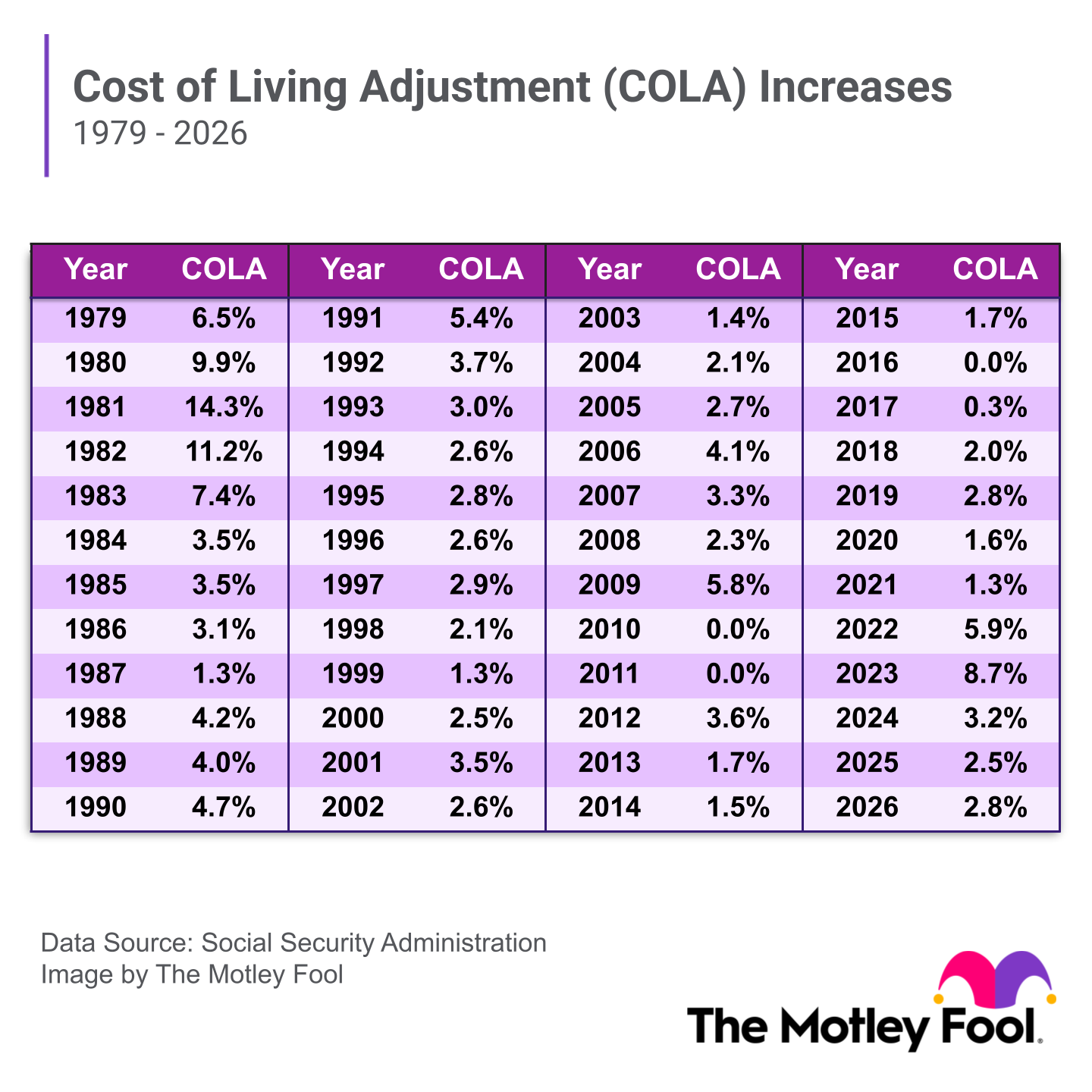A cost-of-living adjustment, or COLA, is an inflation-based increase rolled out annually to all recipients of Social Security and Supplemental Security Income (SSI). For 2026, the Social Security COLA is 2.8%. We'll explain below exactly what that means for recipients.
What is the Social Security COLA?
The Social Security COLA, or cost-of-living adjustment, is an annual adjustment to Social Security checks aimed at preserving the purchasing power of benefits. Without Social Security COLAs, benefits would buy less over time due to the effects of inflation.
Each October, COLAs for the following year are announced based on changes to the Consumer Price Index for Urban Wage Earners and Clerical Workers (CPI-W). Beneficiaries then receive the increase in January.
What is the Social Security COLA for 2026?
As mentioned, the Social Security COLA for 2026 is 2.8%. The Social Security Administration (SSA) announced the official 2026 COLA on Oct. 24, 2025, following the release of September 2025 inflation data.
The 2026 COLA will bump the average retired worker's monthly payment from $2,015 to $2,071, a $56 increase. The COLA takes effect in December, and the updated benefits are paid out starting in January 2026.
The 2026 Social Security raise is higher than the 2.5% beneficiaries received in 2025, but lower than the 3.2% COLA for 2024 and the 8.7% COLA for 2023. The 2023 increase was the highest since 1981 and the fourth-largest COLA in the program's history.
From 2010 to 2019, COLAs were 2% or less in eight out of 10 years. However, soaring inflation triggered by the COVID-19 pandemic resulted in the highest COLA in more than 40 years in 2023. The smaller COLAs since then reflect cooling inflation. Inflation in July, August, and September 2025 determined the COLA that Social Security and SSI beneficiaries will receive in 2026.
How is the Social Security COLA calculated?
As mentioned, the COLA computation relies on changes in the Consumer Price Index for Urban Wage Earners and Clerical Workers (CPI-W). Like other measures for inflation, the CPI-W is calculated monthly by the Bureau of Labor Statistics.
Each year, the SSA averages the CPI-W value for the third-quarter months of July, August, and September. The average is then compared to the same value for the prior year. If the current year's average is higher, the percentage increase is the COLA.
For example, the third-quarter CPI-W for 2024 was 308.729. In 2025, the average was 317.265. The percentage difference here is 2.8%, which became the 2026 COLA. Social Security and SSI recipients will see their benefits increase by that percentage in January 2026.
Related retirement topics
When can I start collecting Social Security?
You can start collecting Social Security retirement benefits at age 62. However, you won't be eligible for your full benefit until you hit full retirement age (FRA), which is 67 for anyone born in 1960 or later. If you claim benefits early, you'll permanently reduce the amount you can collect each month, though the trade-off is you'll get more checks during your lifetime.
You can also increase your benefits by waiting to collect Social Security past your full retirement age. You can receive an extra 8% for each year you delay past your FRA until your benefit maxes out at age 70.










